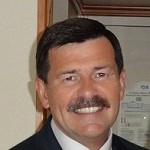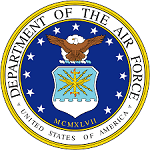Leadership Development
Accredited Consulting Service for Mr. Snodgrass MBA MS BS Accredited Senior Consultant (ASC)
The Appleton Greene Accredited Consultant Service (ACS) for Leadership Development is provided by Mr. Snodgrass and provides clients with four cost-effective and time-effective professional consultant solutions, enabling clients to engage professional support over a sustainable period of time, while being able to manage consultancy costs within a clearly defined monthly budget. All service contracts are for a fixed period of 12 months and are renewable annually by mutual agreement. Services can be upgraded at any time, subject to individual client requirements and consulting service availability. If you would like to place an order for the Appleton Greene Leadership Development service, please click on either the Bronze, Silver, Gold, or Platinum service boxes below in order to access the respective application forms. If you have any questions or would like further information about this service, please CLICK HERE.A detailed information guide for this service is provided below and you can access this guide by scrolling down and clicking on the tabs beneath the service order application forms.
Bronze Client Service
Monthly cost: USD $1,500.00
Time limit: 5 hours per month
Contract period: 12 months
SERVICE FEATURES
Bronze service includes:
01. Email support
02. Telephone support
03. Questions & answers
04. Professional advice
05. Communication management
To apply – CLICK HERE

Silver Client Service
Monthly cost: USD $3,000.00
Time limit: 10 hours per month
Contract period: 12 months
SERVICE FEATURES
Bronze service plus
01. Research analysis
02. Management analysis
03. Performance analysis
04. Business process analysis
05. Training analysis
To apply – CLICK HERE
Gold Client Service
Monthly cost: USD $4,500.00
Time limit: 15 hours per month
Contract period: 12 months
SERVICE FEATURES
Bronze/Silver service plus
01. Management interviews
02. Evaluation and assessment
03. Performance improvement
04. Business process improvement
05. Management training
To apply – CLICK HERE
Consultant profile
Mr Snodgrass is an approved Senior Consultant at Appleton Greene and he has experience in management, marketing and human resources. He is also a retired 2 star General in the USAF. He has achieved a Masters of Business Administration in Management, a Master of Science and a Bachelor of Science in International Affairs. He has industry experience within the following sectors: Aerospace; Defense; Aviation and Manufacturing. He has had commercial experience within the following countries: Japan; Saudi Arabia; United States of America and Egypt, or more specifically within the following cities: Washington DC; Dallas TX; Atlanta GA; Tampa FL and St. Louis MO. His personal achievements include: negotiated $3B F-16 FMS case; captured $450M fighter upgrade; increased pipeline by more than $1B; redesigned corporate international organization and global analysis of corporation’s market. His service skills incorporate: strategic alliance management; leadership development strategy; FMS processes; leadership training and capability analysis.
To request further information about Mr Snodgrass through Appleton Greene, please CLICK HERE

Executive summary
Leadership Development
One of the most important tasks for any corporation is to select, train, mentor and develop leaders up and down the organization. Regardless of market segment, leaders in an organization are crucial for growth, training subordinates, retaining personnel, selecting replacements and formulating/executing the company’s strategy. Understanding the differences between how to construct and manage process, and how to lead people who are executing activities in support of the company’s strategy is an important distinction that is often missed by both corporations and individuals. Leaders understand the objectives of the organization, work with their teams to develop execution strategies, solve problems faced by their teams along the way and make recommendations for change to their superiors. When leaders know how to act, how to lead teams while managing process, how to deal with both crises and success, and how to get the most out of their people they can be extremely effective and provide increased value to the company. This service approaches leadership from a broad perspective formed by over three decades of experience and success in both the US Air Force and industry. The service can be focused for first time leaders, experienced mid-level managers who are moving into new responsibilities, and senior or C-Level leaders of companies and corporations. The service can be focused in particular areas such as production and manufacturing, business development, supply chain, contracting, human resources, government liaison, engineering, or combinations of various functional areas in small groups. The service can be directed at individuals or small groups, depending on their level of experience. For more senior clients, an individual approach is more appropriate while for less experienced or new managers small group approaches are preferred. Annual follow up sessions with leaders who have completed the program is also available to ensure leaders continue to grow in their roles.
Service Methodology
The first step in the service is a review of candidate’s resumes, if allowed by company policy performance reports for the past 2 years, and conducting individual interviews to ensure the training is properly focused. Pre-visit company research provides a basis for discussions with company leaders (not candidates but candidate’s supervisors) that will inform SGSS on company leadership approaches and philosophy. Training for first time or entry level managers is an 8 hour process, split into two 4 hour days. Groups of 8-10 maximum are best for this level of discussion, but smaller numbers can easily be accommodated. Candidates are asked to describe their concept for the perfect leader and attributes these leaders should exhibit. They will also describe things about leaders they do not aspire to mimic. Then the service reviews differences between traditional and matrix organizations, pros and cons of each, and leadership challenges for both. The candidates participate on discussion topics including (not exhaustive): Concepts of Authority, Responsibility and Accountability, metric based leadership, first time introductions into new organizations, how to meet new people, communication techniques and pros/cons to each, how to drive the organization, how to deal with under-performing people, learning from failure, motivation techniques, the role of HR, and dealing with peers from a leadership perspective. Each is discussed with examples from other organizations and candidates are discouraged from bring stories from their current company into the discussion. At the end of the 8 hours, the last session begins with each candidate describing their leadership philosophy in 1 minute or less, and then becomes a capstone discussion of techniques covered throughout the session and recommended reading materials on leadership to allow candidates to continue to improve their leadership skills. For mid- to senior-level leaders (senior managers, directors, and senior directors) preparation is similar and group sizes of less than 5-6 are best. During the training for more experienced leaders the review of different organizational constructs becomes more give and take on their experiences and how they see the pros and cons affecting their new roles. Each candidate is then asked to describe their leadership philosophy in less than one minute. After this review the service then conducts training on the above topics, focused for more senior leaders, with a similar wrap up session. For senior VP and company presidents the training is one-on-one, focused on leading teams of teams, driving the organization to success, communication, personnel management, and message creation and dissemination. Interviews of direct reports and one level below, as well as preparation on the company as described above are important steps in the process. Depending on the level of access allowed, SGSS offers a shadow program for senior leaders to allow for direct feedback on their performance after observation of leaders in action. Short one on one sessions over a period of 2-3 days culminate in a final review of observations and suggestions for consideration by the leader.
Service Options
Companies can elect whether they just require Appleton Greene for advice and support with the Bronze Client Service, for research and performance analysis with the Silver Client Service, for facilitating departmental workshops with the Gold Client Service, or for complete process planning, development, implementation, management and review, with the Platinum Client Service. Ultimately, there is a service to suit every situation and every budget and clients can elect to either upgrade or downgrade from one service to another as and when required, providing complete flexibility in order to ensure that the right level of support is available over a sustainable period of time, enabling the organization to compensate for any prescriptive or emergent changes relating to: Customer Service; E-business; Finance; Globalization; Human Resources; Information Technology; Legal; Management; Marketing; or Production.
Service Mission
Maj Gen (ret) M. Snodgrass is a highly experienced senior executive who has successfully led and managed very large organizations for the USAF, Joint Staff, and industry. His experience working with diverse groups of people across the globe as well as multiple foreign partners and industries gives him a unique perspective in understanding how to lead complex organizations with varied missions. His skills as a teacher and communicator are well known in the US military and industry; and combined with global business success across defense and aerospace industries allows Snodgrass to present unique and sustainable leadership techniques to groups and individuals. His skills can best be employed through small group or individual engagements, seminar discussions, leadership workshops and cross-business collaboration approaches and techniques. By helping leaders across the experience spectrum be better at leading their organizations as well as managing processes, Mr. Snodgrass will help all levels of the corporation be more effective, increasing growth in highly competitive markets.

Service objectives
The following list represents the Key Service Objectives (KSO) for the Appleton Greene Leadership Development service.
- Candidate reviews
The first step in the service for both new leaders at the manager level and mid-level (Director) leaders is a review of the candidates for this training. The process includes reviewing their resumes, and, if allowed by company policy, their performance reports for the past 2 years. The next step is for SGSS to understand the company, their strategy or market approach, corporate culture, and leadership/management/HR philosophy. Pre-visit research on the company will provide a basis for discussions with leaders in the company (not the candidates for training but a select group of supervisors) that will inform SGSS on company leadership approaches and ensure SGSS is in line with company philosophy. Supervisors will be asked to explain their selection criteria for this new leader and identify those characteristics that made the candidate the best for this position. The service then conducts individual candidate interviews (approximately 30 minutes each) to compare what is written about the person to the actual person. SGSS can then ensure that the training is focused properly. - Manager training
For first time leaders or entry level managers, the training is approximately 12 hours of training, split into 4 hour sessions (with breaks every 90 minutes) if approved by the client. Candidates should be in their positions less than 4 months (preferred). Groups of 8-10 are best for this level of dialogue, but smaller numbers can easily be accommodated. In the first hour candidates are given an overview of leadership definitions and asked to briefly describe their concept for the perfect leader and the attributes these leaders should exhibit. They are also asked to describe those things about leaders that they do not aspire to mimic. In the next two hours the service reviews other qualities and characteristics generally accepted for leaders, the differences between traditional organizational concepts and matrix organizations, pros and cons of each, and leadership challenges for both. At the end of the first session, the service introduces the upcoming seminar training, with candidate participation, on topics including: Concepts of Authority, Responsibility and Accountability; first time introductions into new organizations; and taking over from within an organization. During the next two 4 hour sessions the service covers: metric based leadership; how to meet new people; communication techniques (face to face, phone, email, public meetings, private discussions) and pros/cons to each; how to drive the organization; how to deal with under-performing people; motivation techniques; taking ownership of people and results; the role of HR; managing up and leading from above; work / life balance; building trust in employees; loyalty; getting ahead of demanding bosses; time management; attaining consistency in leadership; and dealing with peers from a leadership perspective. - Director training
For mid- to senior-level leaders (senior managers, directors, and senior directors) preparation is similar to objective 01, and group sizes of less than 5-6 are best. Group size control is important at this level because more experienced leaders feel the need to talk about their lessons and experiences more than most entry level leaders. During the training for more experienced leaders the review of different organizational constructs becomes more give and take on their experiences and how they see the pros and cons affecting their new roles. Each candidate is then asked to describe their leadership philosophy in less than one minute. After this review the service then conducts training on the following topics, focused for more senior leaders. In the first hour, candidates are given an overview of leadership definitions and asked to briefly describe their concept for the perfect leader and the attributes these leaders should exhibit. They are also asked to describe those things about leaders that they do not aspire to mimic. In the next two hours the service reviews other qualities and characteristics generally accepted for leaders, the differences between traditional organizational concepts and matrix organizations, pros and cons of each, and leadership challenges for both. At the end of the first session, the service introduces the upcoming seminar training, with candidate participation, on topics including: Concepts of Authority, Responsibility and Accountability; first time introductions into new organizations; and taking over from within an organization. During the next two 4 hour sessions the service covers: metric based leadership; how to meet new people; communication techniques (face to face, phone, email, public meetings, and private discussions) and pros/cons to each; how to drive the organization; building trust in employees; loyalty; how to deal with under-performing people; motivation techniques; taking ownership of people and results; time management; the role of HR; managing up and leading from above; work / life balance; getting ahead of demanding bosses; attaining consistency in leadership; and dealing with peers from a leadership perspective. - C-Suite training
For C-Suite leaders (senior VPs, Presidents, CEOs) preparation is similar to objective 01 including interviews of direct reports and skip level senior managers, but access to performance reports is not required. The next step is for SGSS to understand the leader, their goals for the company, corporate culture, and leadership/management/HR philosophy. This is an interactive discussion lasting 1-2 hours. The next 2 hours are spent reviewing the leader’s views on the following: Concepts of Authority, Responsibility and Accountability; communication techniques (face to face, phone, email, public meetings, and private discussions); how to drive the organization; loyalty; trust; respect; the leader’s role in success; work / life balance; attaining consistency in leadership; and depth vs breadth. The shadow program offered allows SGSS to sit with the leader in meetings and discussions, witness the leader in action (even to read some emails if possible) and note how teams react to the leader’s style and approach. At the end of the program, a debriefing is available for the senior leader to hear perspectives and potentially suggestions on leadership that will help the organization achieve its goals and objectives. - Seminar Facilitation
The service offers a combined seminar/very large group/panel approach that can be used for larger audiences and different venues than the services described above. The seminar approach allows for SGSS to participate as either a moderator of a panel of company leaders at leadership team off site meetings or as a panelist at similar events. In addition, a 2 hour discussion of leadership from a broad perspective with anecdotes and real life lessons from industry and the military used to show how differing styles of leadership may or may not be appropriate based on the situation and desired outcomes. The presentations for very large groups allow for audience questioning at the end of the discussion.

Testimonials
USAF
“Major General Snodgrass is the best teacher of practical leadership I have seen in my career. His ability to explain cause and effect, and suggest new techniques to help leaders be more effective is superb. His over 40 years of leadership experience and willingness to share lessons learned with the audience resulted in extremely beneficial discussions on leadership and its importance in our organization.”
USAF Europe
“General Snodgrass led the most comprehensive review of organizational alternatives I have ever seen. His ability to focus the team on the pros and cons of various organizational concepts and then extract the risks and benefits from various alternatives made everyone on the team perform better on the project. His focused approach to fact finding and basing recommendations on hard data allowed the team to deal only with facts and not try to predict “what the boss wanted to see.”
USAF Headquarters
“Col Snodgrass provided the best review of leadership techniques, pitfalls, opportunities and objectives for the course at Maxwell Air Force Base. His speaking style was easy to follow while being informative and keeping the audience’s attention. He is motivational and practical and helps the audience see the connection between their actions and the success of the organization in a unique way.”
Engility Corporation
“Mr. Snodgrass was the hit of the Armed Forces Communications and Electronics Association (AFCEA) conference in Washington DC in 2013. His leadership discussion and views on how to take skills learned in the military and transform them into leadership skills in the private sector was outstanding. The Q&A was particularly instructive with his practical suggestions to a widely diverse group of communications professionals.”
US Africa High Command
“Maj General Snodgrass was the keynote speaker at several events in Germany during 2009 to 2010. As the keynote speaker for Black History Month his presentation about diversity and the need for leaders at all levels to seek out and promote the talents of all individuals in the organization was unique and extremely well received. As the Graduation Speaker at Stuttgart High School’s commencement to an audience of over 2000 students and parents he focused the students on not only their accomplishments but their future value to themselves and our nation by talking about their upcoming leadership challenges. His presence and delivery in addition to his approach to the subject matter was truly inspiring for both speeches.”
More detailed achievements, references and testimonials are confidentially available to clients upon request.

Industries
This service is primarily available to the following industry sectors:
Manufacturing
Manufacturing touches every possible sector of the economy. From Aerospace to Transportation leadership is needed across the labor and management spectrum in every conceivable field where people work for other people. In good times of growth and times of recession, for private companies and public corporations, in government and the service industry the one common thread is that leadership drives organizations to success or leaders are held accountable for the lack of success. Global manufacturing is still in the recovery phase after the 2009 recession, and companies are looking for any advantage possible to be successful in their markets. Companies seeking to grow are recruiting leaders at an accelerated pace in order to position their companies for future success. Without leadership, and their ability to recruit, train, motivate, retain and reward personnel companies will soon find themselves suffering the fate of so many other businesses that could not keep up with the changing environment and succumbed to only maintaining or protecting their core instead of growing despite the challenges in the world economy. As the economy recovers over the next few years, those who have positioned themselves with a group of thoughtful, dedicated, trustworthy and effective leaders will lead their marked sectors in the recovery and years to follow.
Aerospace
There is an extremely important need for capable, calm, decisive and mentoring leadership in aerospace because leadership is fundamental to the safe conduct of aerospace operations. Leadership is needed across the management spectrum in every conceivable function in aerospace where people influence the conduct of operations. Leadership drives organizations to success or leaders are held accountable for the lack of success, and in the Aerospace industry the lack of success often manifests itself in very visible and expensive ways. Companies seeking to compete in this industry are recruiting leaders at an accelerated pace in order to position their companies for future success. Without leadership, and their ability to recruit, train, motivate, retain and reward personnel, aerospace companies will soon find themselves unable to retain highly skilled and expensive people, giving up competitive advantage and losing market share. As the economy recovers over the next few years, those who have positioned themselves with a group of thoughtful, dedicated, trustworthy and effective leaders will lead the aerospace sector into the future.
Defense
The defense industry is highly competitive from the prime contractor to the supplier base. Moreover, the industry is in dire need of technical experts who can lead organizations to success. Often defense industry leaders lament the fact that their best engineers and technical experts are ill prepared for the leadership roles they need to fill in order to keep the company moving forward and successful. Leaders lead people and manage processes in this highly competitive and very visible business sector. Leaders ensure the next generation of engineers and technical experts are focused on the right tasks, motivated to succeed, confident in their company’s leaders and managers’ ability to handle issues and make decisions that are best for both the company and employees. By training leaders at an early stage in their development and throughout their progression in the company, defense industry primes and suppliers will be more competitive with higher retention and lower costs to their customers.
Aviation
The growth of the global airline industry combined with the rise of smaller and more efficient competition has made profitability a challenge. From 2004 to 2014 industry revenue doubled from $369 billion to over $700 billion in 2014. Much of that growth has been driven by low-cost carriers (LCCs), which now control some 25 percent of the worldwide market and which have been expanding rapidly in emerging markets. If China and Asian air traffic follows the same patterns in 2016 as they did in 2007, the appetite for air travel will be less affected by the market correction of 2016 and will continue its decade long growth. To account for this competitive growth environment, Leadership training is essential in all parts of the commercial aviation value chain from airports, airplane manufacturers, jet engine makers, travel agents, and service companies. Aviation is a very complex business, with high regulation a key factor that requires very talented and motivated employees to navigate. The rapidly dropping price of oil will also mean price pressure will continue for the airline industry. Leadership training and retention is a key element in any successful growth strategy, and essential for the environment we are in today.
Technology
Leadership is not about holding meetings, nor about managing process. It is about managing and motivating people who do a countless number of touch labor and non-touch labor to support sectors from construction to printing, software development, telecommunications, semiconductor development and manufacture, automotive, tire manufacture, solar power, toys and games, and importantly, the security industry. Industry needs trained and motivated leaders who understand their sector, the market, the competition and who can focus their teams on successful strategies to be competitive in their market. Without leadership, and their ability to recruit, train, motivate, retain and reward personnel, industry will soon find themselves unable to retain highly skilled and expensive people, giving up competitive advantage and losing market share.
Locations
This service is primarily available within the following locations:
Washington DC
Washington DC is clearly at the heart of US legal and policy formulation. Within the district are multiple stake holders (State, Defense, the military departments, numerous industry leaders, special interests) and the headquarters of multiple corporations and companies who constantly are interacting and competing for their own, sometimes unique, perspectives to be heard and adopted. Washington DC has 15 Fortune 500 companies including: No. 13 Fannie Mae; No. 32 Freddie Mac; No. 59 Lockheed Martin Corp.; No. 99 General Dynamics Corp.; No. 122 Northrop Grumman Corp.; No. 124 Capital One Financial Corp.; No. 174 The AES Corp.; No. 185 Computer Sciences Corp.; No. 219 Marriott International Inc.; No. 289 Hilton Worldwide Holdings Inc.; No. 443 Booz Allen Hamilton Holding Corp.; No. 460 Discovery Communications Inc; No. 477 Host Hotels & Resorts Inc.; No. 481 Gannett Co. Inc.; and No. 495 NII Holdings Inc. Understanding the intricacies of the Washington DC environment and leading large organizations in that environment requires a broad strategic perspective as well as the ability to explain to various leaders and their staffs the merits of a particular proposal in ways that allow them to advance their own agendas. Succeeding in the Washington DC environment requires thoughtful, patient, focused, aggressive and dependable leadership skills up and down the organization.
Dallas TX
The Dallas/Fort Worth area is the fastest-growing metro area in Texas, and possibly the nation. The DFW Metroplex is the fourth largest metropolitan area in the country, with a population of 6,700,991, according to 2012 data. The region has gained over 1 million since 2000. The unemployment rate has been consistently lower than both the Texas and national averages: .35 and 1.2% lower in July of 2013, respectively. There are more than 70,000 firms in the area, with 90,000 physical business establishments. Around 4% of those firms and 1% of physical establishments have more than 500 employees. For the past three years Dallas has been a leader in job growth, income growth and/or median home price growth across the country. These statistics are fuelled by major industry growth in manufacturing, defense and aerospace/aviation. American and South West Airlines, Raytheon, Lockheed Martin, PAE, and at least 22 Fortune 500 companies have major presence in Dallas/Ft Worth area. The growth in services industries in the greater metropolitan area indicate that the rate of growth appears on a sustainable path despite the setbacks in 2009 and 2010 in the national economy. When these trends are viewed in light of very favorable tax incentives for businesses and the lack of an individual state income tax combined with major throughput from airlines and road/rail access; the centralized location in the nation for Dallas puts this region at the top of sustainable growth candidates for the next 10 years.
Atlanta GA
Manufacturing, Aviation and Defense contractors in Georgia are able to compete for government contracts and maintain a competitive advantage by employing a highly-skilled and trained workforce thanks in large part to a historically strong military presence, in particular a partnership with the U.S. Air Force, and an outstanding education system. These companies are actively searching for leaders at all levels in order to compete for this business and perform on current contracts. Other industry sectors in the greater Atlanta and mid-Georgia region require leadership training, such as: modelling and simulation companies, educational institutions such as Columbus State University, University of Georgia Athens, and Georgia Tech. In addition Atlanta enjoys close proximity to Robins Air Force Base and the Warner Robins Air Logistics Center, quick and easy access to vital ocean training and weapons systems training areas to both the east and south and swift and efficient transport of defense goods to both domestic and international customers from Hartsfield Airport. For decades Atlanta has held a competitive advantage with a highly-skilled workforce of former military personnel ready for almost all defense related areas. Finding experienced leaders for this environment is challenging, and companies need to not only attract but retain their leaders to build for the future. Atlanta ranks fourth in the nation in the number of Fortune 500 companies located there, for example: Lockheed Martin, Boeing, Northrop Grumman, General Dynamics (Gulfstream), Raytheon, BAE Systems, United Technologies (Pratt & Whitney), L-3 Communications, and SAIC all have operations in Georgia. Other notable Georgia defense companies include Heckler & Koch, Glock, Daniel Defense, and recently it was announced that Mercedes-Benz USA is relocating their headquarters to Atlanta from New Jersey, their $100 million headquarters will open in 2017.
Tampa FL
Tampa Bay is home to 19 corporate headquarters with over $1 billion in annual revenue, seven of which are Fortune 1000 companies. Almost 500 foreign-owned companies representing more than 40 nations are established in the greater Tampa area. Identified as the commercial and industrial heart of the region, Hillsborough County – which includes the cities of Tampa, Plant City, and Temple Terrace – is a leading location for corporate site selection in North America. Companies operating in Tampa enjoy low labor costs, favorable corporate tax policies, no personal income tax, and stable, pro-business leadership. Collaboration between state and local government and industry has resulted in effective development packages, targeted financial incentives, expedited permitting, and streamlined regulatory processes. These conditions have attracted companies such as Bristol-Myers Squibb, Depository Trust and Clearing Corporation, Citigroup, Amazon, and USAA. The Orlando area, near Tampa, is home to a world leading modelling and simulation industry with Lockheed Martin, Boeing, General Dynamics, Pratt & Whitney, and Northrop Grumman, all having chosen Florida for its strong research partnerships and skilled workforce, including a substantial talent pool of highly-trained veterans. Florida continues to attract more defense industry capability to the state and combined with a substantial US military presence is positioned for continued growth and influence for the long term. One reason is the youthful nature of their population. Hillsborough County’s millennial population is growing 13 percent faster than the nation as a whole, according to U.S. Census data. Three public universities located within a relatively short drive of Tampa Bay – University of South Florida, University of Central Florida, and University of Florida – are home to more than 150,000 students, over 60 percent of whom local leaders believe will stay in Florida upon graduation. Tampa Bay has more than 80 colleges, universities, and technical schools producing thousands of graduates for area employers each year. Approximately 92,000 veterans are in our active labor force as well, offering employers an invaluable source of uniquely trained personnel. This large, young and growing work force will produce substantial requirements for leadership training to help these companies grow in the future.
St. Louis MO
St. Louis is home to dozens of companies listed on various stock exchanges in the U.S., with market capitalizations ranging from over $500 thousand to more than $40 billion. Among these public companies, Greater St. Louis is home to 19 Fortune 1000 headquarters, of which 9 are Fortune 500. Greater St. Louis is also home to some of the nation’s largest private companies, several listed among Forbes’ America’s Largest Private Companies such as: 16-Enterprise Holdings; 59-World Wide Technology; 65-Edward Jones; 66-Graybar Electric; 72-Apex Oil; 141-McCarthy Holdings; and at 180-Schnuck Markets. According to data compiled by the St. Louis Business Journal in 2014, St. Louis’s 25 largest international companies had international sales of over $129 billion in 2013. St. Louis companies are also ranked nationally as best places to work, most innovative, and Inc. magazine’s list of America’s 5000 Fastest-Growing Private Companies 2015 ranks include 41 companies based in the St. Louis metropolitan area; 20 St. Louis-based firms ranked in the top 2,000: St. Louis is also home to many aerospace and aviation companies including Gateway Jets, Advanced Aerospace Technologies, Aeronavdata, Bickel Air, Ellason Weather Radar, Fregata Systems, GKNAerospace North America, Saberliner Services, Valent Aerostructures, Northrop Grumman Systems, and Summit Air. The State of Missouri is a top 10 state for aerospace manufacturing attractiveness according to a 2015 report by PwC, and it is home to major companies such as GKN Aerospace, LMI Aerospace and PAS Technologies. On the defense side two major facilities of the National Geospatial-Intelligence Agency, Boeing’s Defense, Space and Security including their military aircraft headquarters, numerous logistics contractors supporting the Defense Logistics Agency, and Scott Air Force base is located just across the Mississippi River in Illinois. Access to both coasts, major international and domestic airport access, a highly skilled workforce and attractive tax structures make St Louis a very strong candidate for future growth in virtually all manufacturing and industry sectors. The fuel for this growth will come from a highly trained and motivated work force, heavily dependent on leadership to sustain growth into the future.
Clients
This service’s current clients or employers include:
US Air Force
The mission of the United States Air Force is to fly, fight and win in air, space and cyberspace. Whoever you are and wherever you fit on the Air Force team, the Core Values are what we live by and cherish: integrity first, service before self, excellence in all that we do. To achieve that mission, the Air Force has a vision of Global Vigilance, Reach and Power. That vision orbits around three core competencies: developing Airmen, technology to war fighting and integrating operations. These core competencies make our six distinctive capabilities possible. Air and Space Superiority: With it, joint forces can dominate enemy operations in all dimensions: land, sea, air and space. Global Attack: Because of technological advances, the Air Force can attack anywhere, anytime and do so quickly and with greater precision than ever before. Rapid Global Mobility: Being able to respond quickly and decisively anywhere we’re needed is key to maintaining rapid global mobility. Precision Engagement: The essence lies in the ability to apply selective force against specific targets because the nature and variety of future contingencies demand both precise and reliable use of military power with minimal risk and collateral damage. Information Superiority: The ability of joint force commanders to keep pace with information and incorporate it into a campaign plan is crucial. Agile Combat Support: Deployment and sustainment are keys to successful operations and cannot be separated. Agile combat support applies to all forces, from those permanently based to contingency build-ups to expeditionary forces.
Burdeshaw & Associates
With more than 34 years of proven performance, Burdeshaw Associates, Ltd. (BAL) holds a distinctive position in the consulting arena as the partner of choice for achieving business objectives and gaining market success. BAL’s exclusive strength lies in the vast range of experience and perspectives of our Associates. Drawn from the most senior levels of government and industry, these Associates form highly skilled and productive teams to generate measurable, enduring and high impact results for our clients.
Burdeshaw & Associates – Click Here
Engility Corporation
Engility’s business strategy is based on an economic model that provides precisely the services needed at the best possible cost. Our portfolio of offerings reflects a lifecycle of capabilities that aligns with the critical priorities of the U.S. Government, both domestically and globally as well as state and local governments. We support our customers with a wide range of specialized technology and mission expertise. We are organized to be agile and adaptive, allowing us to deliver the resources and services required to meet current and evolving customer needs efficiently and effectively. Launched in July 2012 as a spin-off company of L-3 Communications, Engility possesses more than 58 years of combined experience across over 70 different legacy companies.
Engility Corporation – Click Here
Raytheon Corp
Raytheon provides state-of-the-art electronics, mission systems integration and other capabilities in the areas of sensing; effects; and command, control, communications and intelligence systems; as well as a broad range of mission support services.

Benefits
Human Resources
- Corporate effectiveness
- Organizational efficiency
- Higher retention
- Lower costs
- Global growth
- Competitive advantage
- Workforce loyalty
- Innovative solutions
- Personal satisfaction
- Employee trust
Production
- Competitive advantage
- Lower costs
- Innovative solutions
- Organizational efficiency
- Decision making
- Confidence
- Global growth
- Workforce loyalty
- Leadership tools
- Trust
Marketing
- Lower costs
- Customer loyalty
- Strategy development
- Growth
- Crisis response
- Mission execution
- Manage change
- Motivate employees
- New opportunities
- Culture of success
Bronze Service
Monthly cost: USD $1,500.00
Time limit: 5 hours per month
Contract period: 12 months
Bronze service includes:
01. Email support
02. Telephone support
03. Questions & answers
04. Professional advice
05. Communication management
SERVICE DESCRIPTION
The Bronze Client Service (BCS) for Leadership Development provides clients with an entry level option and enables client contacts to become personally acquainted with Mr. Snodgrass over a sustainable period of time. We suggest that clients allocate up to a maximum of 5 Key Employees for this service. Your Key Employees can then contact the consultant via email, whenever they feel that they need specific advice or support in relation to the consultant’s specialist subject. The consultant will also be proactive about opening and maintaining communications with your Key Employees. Your Key Employees can list and number any questions that they would like to ask and they will then receive specific answers to each and every query that they may have. Your Key Employees can then retain these communications on file for future reference. General support inquiries will usually receive replies within 48 hours, but please allow a period of up to 10 business days during busy periods. The Bronze Client Service (BCS) enables your Key Employees to get to know their designated Appleton Greene consultant and to benefit from the consultant’s specialist skills, knowledge and experience.
Silver Service
Monthly cost: USD $3,000.00
Time limit: 10 hours per month
Contract period: 12 months
Bronze service plus
01. Research analysis
02. Management analysis
03. Performance analysis
04. Business process analysis
05. Training analysis
SERVICE DESCRIPTION
The Silver Client Service (SCS) for Leadership Development provides more time for research and development. If you require Mr. Snodgrass to undertake research on your behalf, or on behalf of your Key Employees, then this would understandably require more time and the Silver Client Service (SCS) accommodates this. For example, you may want your consultant to undertake some research into your management, performance, business, or training processes, with a view towards providing an independent analysis and recommendations for improvement. If any research and development, or business analysis is required, then the Silver Client Service (SCS) is for you.
Gold Service
Monthly cost: USD $4,500.00
Time limit: 15 hours per month
Contract period: 12 months
Bronze/Silver service plus
01. Management interviews
02. Evaluation and assessment
03. Performance improvement
04. Business process improvement
05. Management training
SERVICE DESCRIPTION
The Gold Client Service (GCS) for Leadership Development is intended for more detailed evaluation and assessment, that may require your Key Employees to have monthly meetings or interviews with Mr. Snodgrass. These meetings and interviews can be conducted over the telephone, Skype, or by video conference if required. The consultant can also attend your business premises, an Appleton Greene office, or another mutually beneficial location, but please note that clients are responsible for the costs of any disbursements separately, including travel and accommodation. This service enables you to integrate the specific skills, knowledge and experience of your designated consultant into your Key Employee management team. The Gold Client Service (GCS) can also incorporate training workshops, business presentations and external meetings with customers, suppliers, associations, or any other business-related stakeholders.
Platinum Service
Monthly cost: USD $6,000.00
Time limit: 20 hours per month
Contract period: 12 months
Bronze/Silver/Gold service plus
01. Project planning
02. Project development
03. Project implementation
04. Project management
05. Project review
SERVICE DESCRIPTION
The Platinum Client Service (PCS) for Leadership Development is our flagship service and will be required if you need Mr. Snodgrass to facilitate the planning, development, implementation, management, or review of a particular project relating to his specialist subject, which would obviously require more time and dedication. This service enables you to reserve up to 12.5% of the consultant’s working month and provides a more hands-on service as and when required. If you need more time than this, then this can always be arranged, subject of course to the consultant’s ongoing availability. The benefit of having an external consultant involved in projects is they provide an independent perspective and are not influenced by internal politics, day-to-day responsibilities, or personal career interest. They provide objectivity, specific knowledge, skills and experience and will be entirely focused upon the tasks at hand. The Platinum Client Service (PCS) will provide your organization with a valuable resource as and when you need it.







































